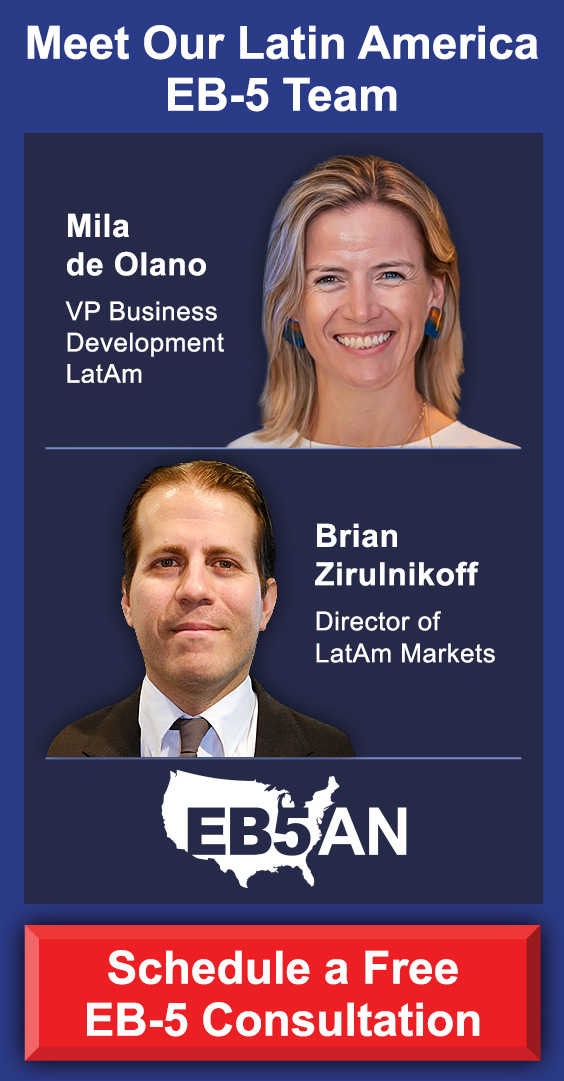The EB-5 Immigrant Investor Program offers foreign nationals the opportunity to obtain a U.S. Green Card (permanent residency) by making a qualifying investment in a U.S. new commercial enterprise (NCE). However, there’s more to the process than just investing the required $800,000 or $1,050,000.
In addition to the investment itself, EB-5 investors must meet specific criteria to demonstrate that their funds come from lawful sources and have been legally transferred. This requirement is crucial for maintaining the integrity of the program and preventing the misuse of the visa.
In this article, we will explore two essential concepts for EB-5 investors: proving the legal source of the investment funds and documenting the path of those funds. We will also discuss the most common types of documents investors should provide to support their case and offer tips on how to navigate this part of the EB-5 process.
The Legal Source of Funds
To qualify for the EB-5 visa investors must demonstrate that the money they are investing in the U.S. comes from a lawful source. U.S. Citizenship and Immigration Services (USCIS) is stringent about ensuring that EB-5 investors have earned their funds through legitimate means. This requirement helps ensure that the funds are not linked to illegal activities, such as money laundering or criminal enterprises.
The investor must prove that they have legally obtained the funds, whether through employment, business profits, investments, inheritance, gifts, or other lawful means. Naturally, the specific source-of-funds documentation depends on the actual source of the funds used for an EB-5 investment and would vary accordingly. However, below we will provide some common sources of funds for EB-5 investors and the documentation required to substantiate them.
Employment Income
One of the most common ways people earn money is through employment. If your investment funds come from your salary or wages, you will need to show evidence of your employment history and income.
The likely documents USCIS would expect to be submitted with the petition are records of salary payments, name of employer, total amount accrued, and tax returns for the last several years to confirm your reported income.
Business Ownership or Profits
If the funds come from the profits of a business you own, you will need to show how the business generated the income and how you took profits out of the business for investment purposes.
Some helpful documents would be bank statements showing the transfer of funds from the business to your personal accounts, capital source summary detailing how the investor acquired stock and showing sale proceeds, proof of legal source of purchasing funds for purchased stock, shareholder or partner agreements.
Inheritance or Gifts
Many EB-5 investors receive their funds through inheritance or as a gift from a family member. In these cases, proving the legal source of funds is crucial to avoid any appearance of impropriety.
In the case of inheritance, documents that include the will, proof that the deceased obtained the assets legally, and proof of relationship to the deceased would be expected.
In the case of a gift, however, a gift letter and statement from the person who gifted the funds that details how they obtained the gifted funds and bank statements should be provided.
Loans
If your EB-5 investment funds come from a loan, you must demonstrate that the loan was legally obtained and that you are personally liable for repaying it. If using a secured loan, the loan must be secured by personal assets, and you’ll need to provide documentation proving the legal acquisition of those assets. Unsecured loans can also be used, as long as they are lawfully obtained and the borrower is personally liable for repayment, as clarified in the Zhang case. Key documents include the loan agreement, proof of collateral, bank statements showing the disbursement of loan funds, and evidence of the lender’s lawful source of funds.
The Path of Funds
Tracking the flow of EB-5 investment capital is a crucial yet often neglected component of assembling source-of-funds documentation for EB-5 applications. The term “path of funds” describes the journey of EB-5 capital from its initial source to the investment destination—specifically, from the origin of the funds to the point they are deposited into the escrow account or the business account of the NCE.
For instance, if an EB-5 investor uses their salary savings to finance the investment, the path of funds would include evidence showing salary payments credited to the investor’s checking account, transfers of amounts from the checking account to a savings account, and the final total being disbursed to the NCE’s business account or into the escrow account for the project.
The documentation must show a clear, legal path of funds from its origin to the EB-5 investment. Your path of funds, as well as your legal source-of-funds documentation, is a crucial set of documents to submit along with your I-526E petition. Below are some documents that might help prove this.
Bank Statements
Bank statements play a crucial role in documenting the path of funds. Investors must provide bank statements that show the flow of funds from their source (whether from employment, business, inheritance, etc.) to the final transfer to the EB-5 investment.
Transaction Records
Any large transactions, such as the sale of real estate, assets, or a business, should be documented. These documents show the path of the funds as they move between accounts or from asset to asset.
Foreign Transfers
If funds have been transferred from a foreign bank account or international source, investors must show the trail of funds across international borders. This includes providing evidence that the funds were legally transferred and were subject to the laws of both the foreign country and the U.S. Currency exchange receipts or documentation should also be included if the funds were converted from a foreign currency to USD.
The Importance of Professional Guidance
The EB-5 process can be complex, particularly when it comes to proving the legal source and path of funds. It is important to keep in mind that USCIS can still request further evidence after I-526E approval.
Because USCIS will scrutinize every document you provide, it is essential to work with an experienced immigration attorney who specializes in EB-5 cases. An attorney can guide you through the documentation process, ensure that you meet all requirements, and help you avoid mistakes that could delay or jeopardize your application.
The process of gathering documents and tracing the path of funds can be time-consuming. It is best to start well in advance of your EB-5 application submission.
It is also important to provide clear, complete, and organized documentation. USCIS requires detailed evidence to support your claims. We highly recommend that investors provide all documents they can find going as far back as possible.
Failure to submit sufficient documentation can result in USCIS requesting further evidence, delaying your I-526E processing time, or even leading to a denial of your application. That’s why it’s crucial to work with an experienced immigration attorney who can ensure your documentation meets USCIS standards and help address any issues that arise during the review process.
Partnering with a knowledgeable EB-5 team throughout the process can also make a significant difference. With more than a decade of experience, EB5AN has helped over 2,300 families from 70+ countries become lawful permanent residents of the United States. We offer clients first-rate, low-risk EB-5 regional center projects with a 100% USCIS project approval rate.
If you would like to learn more about your EB-5 investment options, book a free call with our expert team today.










